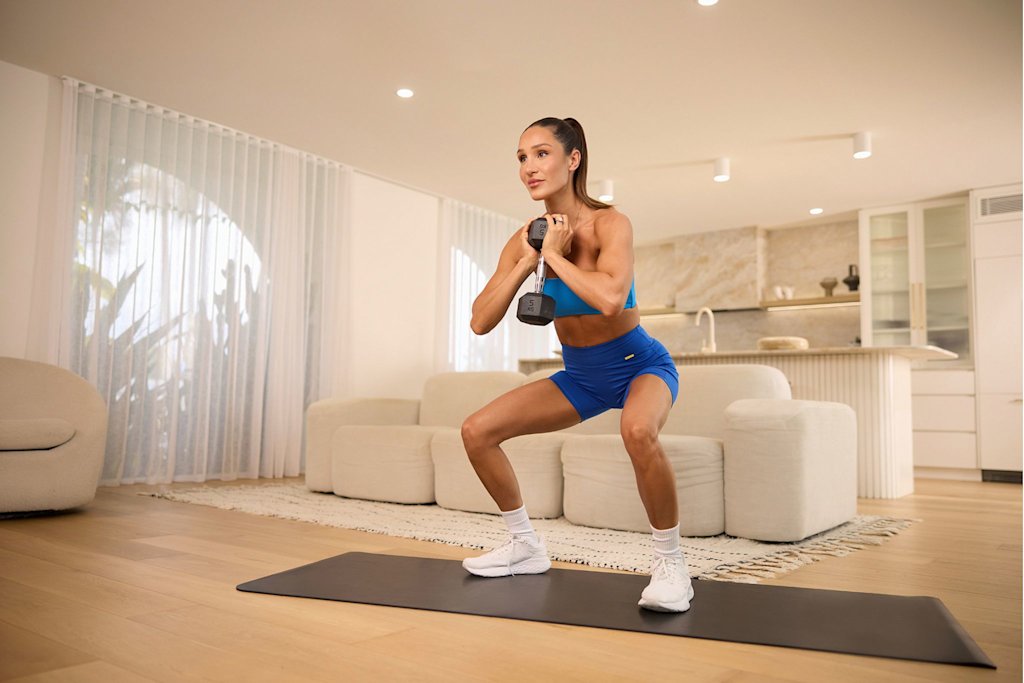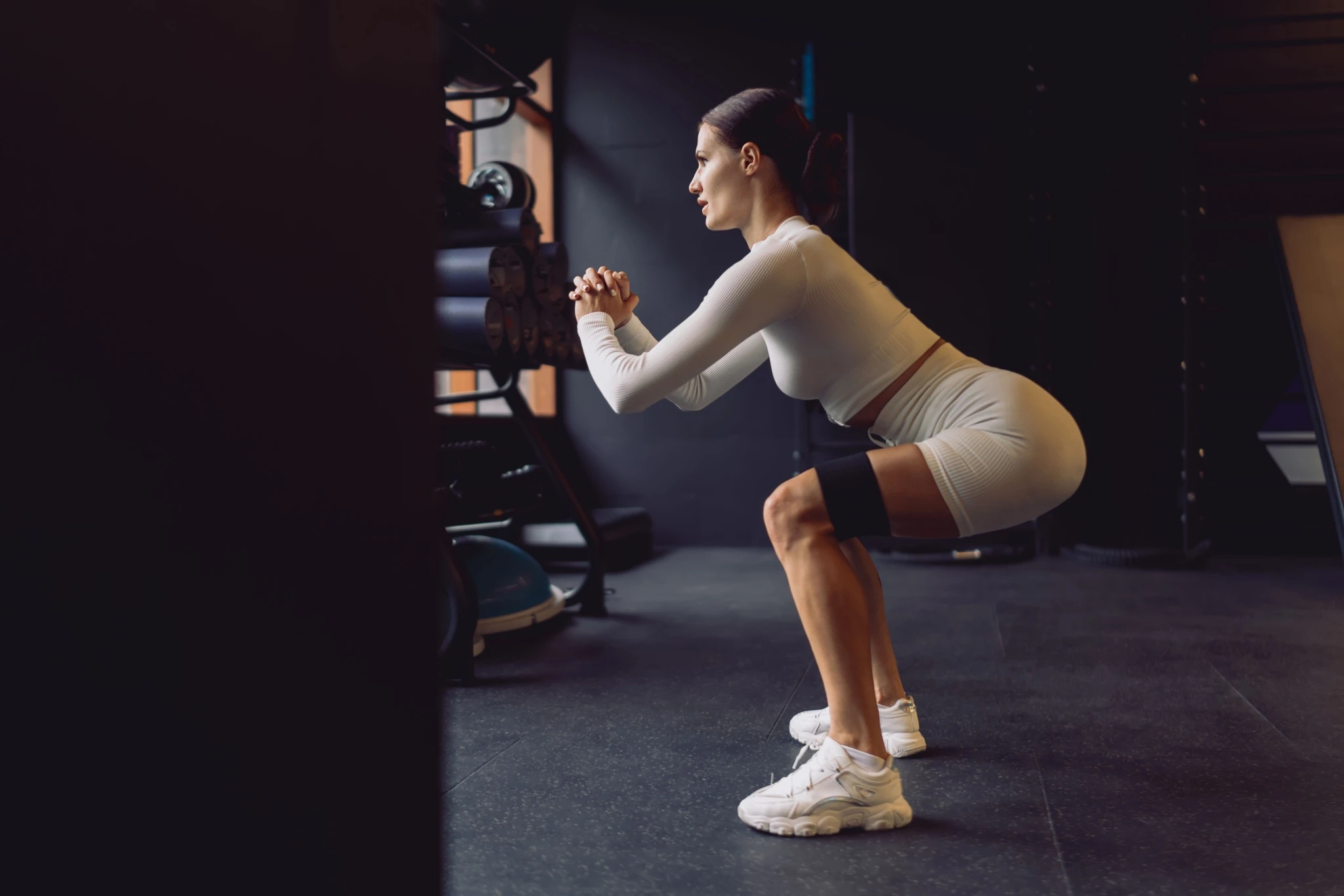Lower Back Pain After Squats? Here's What Your Body’s Trying to Tell You
Here’s how to spot what’s going wrong, fix your form, and keep training pain-free.

October 22, 2025 - Updated October 22, 2025

If you’ve ever racked your barbell or dumbbells (or finished a bodyweight set) and felt a dull ache or sharp pinch in your lower back, you’re not alone. Yes, squats are one of the most effective exercises for building strength and muscle, but when something’s off with your form, your lower back is often the first to give you a nudge (or a scream).
Let’s break down why this even happens in the first place, what you can do about it, and how to stop it from happening again so you can get back to squatting strong without any injury anxiety.
Why your lower back hurts after squats
Post-squat pain in your lower back after squats usually comes down to one of four things: form, preparation (aka your warm-up), mobility, or load.
1. Form: You need some adjustments
The most common culprit is poor squat form, and sometimes the most minor adjustments can make a big difference.
Rounding your lower back (butt wink): When your pelvis tucks under at the bottom of the squat, that curve places extra stress on your lumbar spine. You don’t want to see any rounding or tucking under of your lower back, so think about always pushing your butt back.
Leaning too far forward: Leaning over can cause excess pressure on your lower back as it strains in an effort to balance the weight and prevent you from falling over. Work on keeping your chest up and your core braced.
Not engaging your core or glutes: Without proper bracing, your back muscles end up doing more of the heavy lifting than they should.
How to fix it:
Use a mirror or film yourself squatting from the side to check your form. Keep your chest lifted, push your butt back, brace your core (like someone’s about to punch your stomach), and drive through your heels on the way up. If you notice your spine is rounding at the bottom, don’t go so deep with your squat.
Need a reminder of what good form looks like? Watch the demonstration videos in the Sweat app as many times as you need!
2. Preparation: You need a better warm-up
A proper warm-up does more than get your heart rate up. It primes your muscles, joints, and nervous system to move well and lift safely.
We get it, you’re low on time and warming up can be boring, but please take it from us: skipping your warm-up is one of the easiest ways to end up with back pain after squats.
How to fix it:
Take 5-10 minutes to warm up before every workout. For heavy lifting, start with some light cardio, then do dynamic stretches or bodyweight exercises to prepare your body for the movement to come. Every workout in the Sweat app comes with its own warm-up designed for your session or you can try this leg day warm-up.
For solid squat prep, glute and core activation are most important. We love grabbing a booty band and doing glute bridges, clam shells, crab walks and bird dogs.
Have a warm-up set! If you know you’re going to be lifting 40kg on your back squats, start with a warm-up set using an empty barbell and then load up.

3. Mobility: You need more range
Tight hips, hamstrings, or ankles can force your body to compensate by rounding or arching your lower back.
How to fix it:
As part of your warm-up, we recommend doing specific dynamic mobility exercises to target your weak spots before you start squatting if mobility is an issue for you. This could look like:
Hip circles or 90/90 stretches for hip mobility
Bodyweight squats with a pause at the bottom
Ankle rocks to improve dorsiflexion
It can also help to perform squats with your heels slightly elevated on a weight plate.
4. Load: You need to go lighter
Progressive overload is key for strength, but adding too much weight too quickly can overwhelm your stabilising muscles and set you up for bad lifting habits. You want to challenge yourself with a weight that feels tough but achievable rather than nearly impossible.
How to fix it:
Drop the load slightly (or try bodyweight instead) and focus on moving with control.
Slow down your tempo, especially during the lowering (eccentric) phase, to build strength and stability through your core and glutes, as well as a really strong mind-muscle connection.
When lower back pain is a red flag
Some muscle soreness after a tough leg day is normal, especially if you’re new to squats or have increased your load. However, there’s a big difference between a slight ache and something ongoing or unbearable.
If you're experiencing sharp, stabbing pain, or have pain radiating down your legs, a persistent pain that doesn't ease, or squats simply don't feel right, then listen to your body and check in with a physio or healthcare professional before continuing when things don’t feel right!
Build strength with confidence
Lower back pain after squats doesn’t mean squats are bad; it’s a sign your body is asking for some form tweaks, mobility work, more of a warm-up or a bit less weight. Once you fix the root cause, squats can actually strengthen your lower back and core.
So take your time to work on your form, warm up really well, and lift at a level that your body will love you for.

Erin is a writer and editor at Sweat with years of experience in women's publishing, the fitness industry, media and tech. She's passionate about the power of movement, and you can often find her on a yoga mat, a hike, a dance floor, in the ocean or the gym.
* Disclaimer: This blog post is not intended to replace the advice of a medical professional. The above information should not be used to diagnose, treat, or prevent any disease or medical condition. Please consult your doctor before making any changes to your diet, sleep methods, daily activity, or fitness routine. Sweat assumes no responsibility for any personal injury or damage sustained by any recommendations, opinions, or advice given in this article.
Fitness